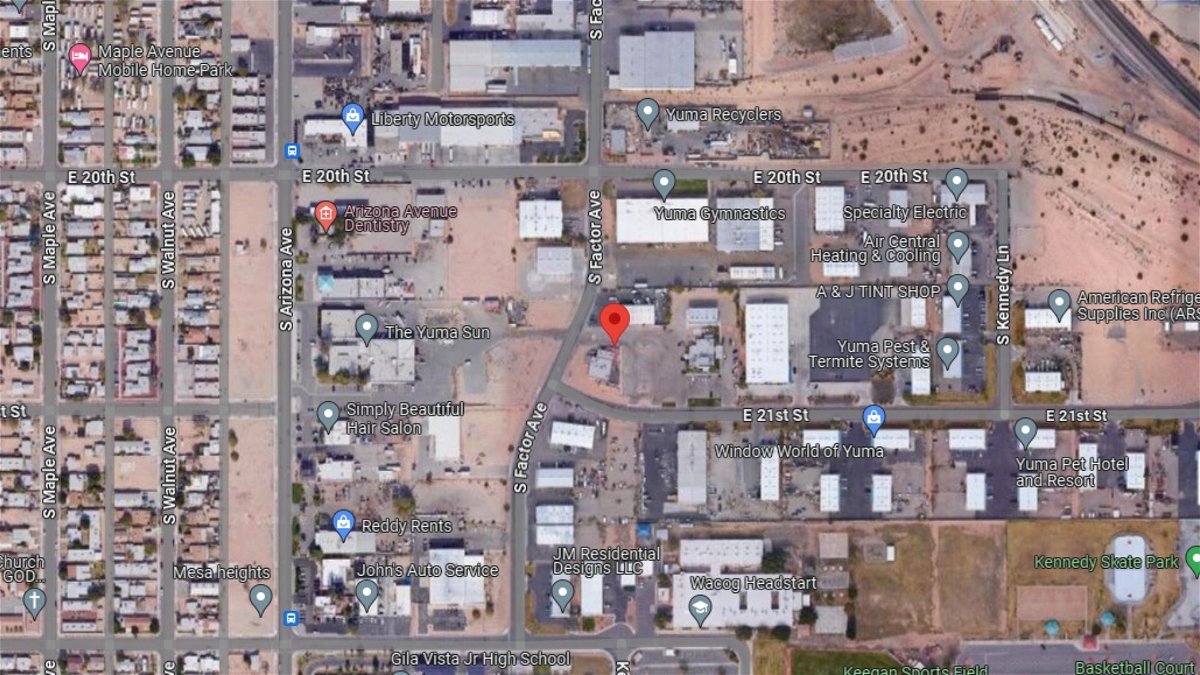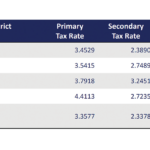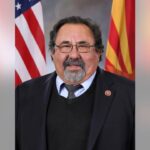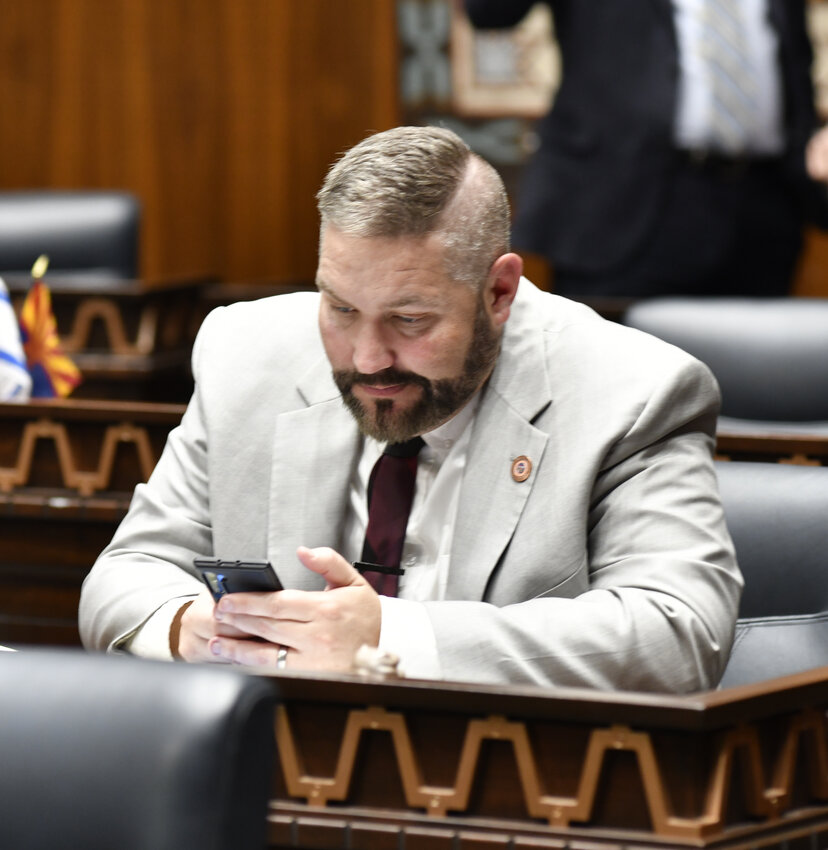Just five days before a looming deadline, Pima County Administrator Jan Lesher said the county will continue to provide refuge for asylum seekers after Congress passed a Homeland Security funding bill, including nearly $650 million to support local governments sheltering migrants.
It’s unclear how much Pima County will receive in the future, but Lesher said Tuesday she had “sufficient confidence” funding will arrive and told county officials to “immediately and seamlessly continue” sheltering asylum seekers who arrive in Southern Arizona.
Over the last five years, Pima County has received nearly $70 million in federal dollars to shelter 423,398 people in a partnership with Catholic Community Services in Tucson. The program sought to avoid “street
releases” of migrants after they are processed by CBP and since September, the effort—aided by state emergency managers—helped transport thousands of people
dropped off by CBP in Cochise and Santa Cruz counties, as well as in Pima County.
In February, Lesher said the county would stop supporting shelters after federal funding dried up by March 31—Easter Sunday—and warned of “homelessness on steroids” when hundreds of asylum seekers, including families with children, would end up on Tucson’s streets without any place to go. Without new federal dollars on the horizon, Pima County officials began winding down contracts to feed and care for people after they are released by U.S. Customs and Border Protection pending their asylum cases.
Following Lesher’s announcement, Arizona Gov. Katie Hobbs, U.S. Sens. Kyrsten Sinema and Mark Kelly, as well as U.S. Reps. Raúl Grijalva and Ruben Gallego pushed for new funding to cover Shelter and Services Program, which is managed by the Federal Emergency Management Agency. Late last week, Congress passed a new $1.2 trillion budget for the federal government, including funding for SSP. President Joe Biden signed the bill over the weekend.
The spending package included $1.6 billion for border management,
another $495 million to hire additional Border Patrol agents, and $75.5
million to install scanners along the border to help intercept fentanyl.
SSP has funded the regional effort to “quickly and efficiently through this community and onward to their final destinations in the interior of the country,” Lesher said Tuesday.
“This bipartisan achievement championed by many in the Arizona congressional delegation and the governor underscores the critical nature of this federal investment to support of border communities,” she wrote.
While the funding has not yet been allocated, Lesher told the Board of Supervisors that based on the appropriation, as well as discussions with staff at DHS, CBP and Federal Emergency Management Agency “it is our expectation that in the coming weeks we will receive formal notice of additional federal funds that will be directed to Pima County in support of our operation.”
“When that occurs we need to be prepared to immediately and seamlessly continue those services that have allowed us to prevent street releases without the use of general fund support,” Lesher wrote.
“I have sufficient confidence in the federal reassurances of funding, that I have directed county staff to work with Catholic Community Services to plan for continued operations at the Ajo and Drexel facilities beyond the end of this month,” she wrote. “This includes providing notice to supporting contractors and vendors of our need for their continued services,” she wrote, added that some contracts and associated funding will need new approvals by the board in the future.
She added county staff are working with with the nonprofit CCS to “re-examine” their program to minimize costs in the future.
“I will provide an update to the Board of Supervisors as soon as we receive further communications from the federal government with the specifics of the award,” Lesher said.
On Friday, Lesher told Tucson Sentinel there were several big questions about how DHS would allocate funding.
While SSP was given $650 million this year, this is 18 percent lower than previous allocations, questions remain about where the money will go. Last year, Sinema and Kelly said DHS “shortchanged” communities along the Southwest border and “subverted the will” of Congress by sending millions earmarked for migrant care to New York City.
The program was created by Congress to help CBP manage processing and prevent the overcrowding at the agency’s short-term facilities, and aid communities along the borderlands, who “bear the brunt” of releases by border officials, said Kelly and Sinema.
Lesher said she expected the majority of the Board of Supervisors would be “pleased to continue in the business” of sheltering asylum seekers. While Supervisor Steve Christy has repeated voted against sheltering asylum seekers, the other board members have repeatedly voted to use federal funding—balking only when it became clear the county would begin burning through general fund dollars after the March 31 deadline.
“Our goal is not only we’re providing the humanitarian service, but we’re keeping Pima County safe,” said Lesher. “It’s worth it to us to front some money to keep people safe and we’re willing to take the risk potentially that we fund this effort without some immediate funding.”
During a meeting with the Tucson City Council, Lesher said “everything we’ve been able to do is because of the federal dollars,” adding it is “not appropriate for local tax dollars to go to a uniquely federal problem.”
She also criticized how the federal government funded the shelter program, telling city officials the county burned through about $4 million per month, and that funding arrived in just-in-time “tranches” from the federal government. Lesher said the system was similar to throwing a coat over a mud puddle as the county continued to the next. “And, that’s not the way to handle this,” she said.
She told the Tucson Sentinel the county asked for $48 million, which would be a “godsend” and allow the county to fund Casa Alitas for months, but the minimum needed is $12 million.
Pima Board Chair Adelita Grijalva said SSP funding is “more restrictive” than previous federal programs, and worried about how the county could cover the gap before funding arrived. She added the effort has become a “pretty significant drain of our staff, as well.” There has to be a change in delivery in funding and how the program is designed, she said.
The looming lack of funding led some local leaders to make dramatic suggestions — such as sending migrants to area military bases — to prompt more federal action. And, the mayor of Douglas said that community is in “full shock” as the funding cliff nears, warning the situation is “fast becoming desperate” if Pima County shuttered Casa Alitas.
Tucson has become a waypoint for asylum seekers who make irregular crossings in Arizona’s vast wilderness and then ask responding Border Patrol agents for protection in the U.S. Limited by immigration law, a series of court strictures, and the logistics of individual stations, CBP and other federal authorities release migrants from custody, allowing them to travel to other parts of the U.S. while pursuing their asylum cases.
For months, Pima County officials told Washington D.C. they need additional funds to cover shelter operations—which cost around $1 million per week to take in as many as 1,000 people arriving each day. Pima County officials also warned that in April, around 450 people could be released directly to Tucson’s streets per day.
From
Feb. 29 to March 6, the Casa Alitas Welcome Center hosted 5,847 people,
averaging around 835 people per day, Pima County officials said. This
includes about 3,905 families including children.
While figures
remain high, this is down from a peak in December when the county
sheltered 9,114 people around the Christmas holiday.
However, until last week Congress refused to fund the Shelter and Services Program. Funding was included in a sprawling Senate border bill, but despite months of bipartisan negotiations and the support of the National Border Patrol Council union for BP agents, congressional Republicans killed the bill after ex-president Trump called it “horrendous.”
Congressional representatives push to get funding to Pima
After the funding passed, Reps. Grijalva, Gallego and Greg Stanton immediately pushed Homeland Security officials to send money to Pima County. In a letter to Homeland Security Secretary Alejandro Mayorkas and FEMA Administrator Deanne Criswell, Grijalva and Stanton urged federal officials to “immediately allocate funding and ensure border communities on the front lines of the crisis are prioritized.”
They noted the last award was in September, and communities in Southern Arizona would run out of funds by the end of March.
“Cities and counties across Arizona already face dire fiscal cliffs, and it is critical you fully support the communities on the front-lines of the border crisis should President Biden sign this bill into law,” Gallego wrote in his own letter to Mayorkas.
Gallego, the Democratic candidate for Arizona’s now-open Senate seat, said the House’s bill includes $650 million for the SSP program, an 18 percent cut that is “significantly below last year’s enacted level and far below the demonstrated need of impacted communities.”
Gallego launched his campaign last year and he will face one of two Republicans in the fall—either failed gubernatorial candidate Kari Lake or Pinal County Sheriff Mark Lamb.
“Even worse, Speaker Johnson bragging that the compromise budget agreement includes cuts to these vitally important SSP dollars illustrates just how out-of-touch the House majority and conservative talking heads, including in my home state of Arizona, are about helping end the border crisis,” Gallego said. “For them, they would rather abandon border communities to score cheap political points.”
Gallego argued that despite the cuts in SSP funding, Arizona’s funding should not be reduced. “Arizona already received far less funding last year as funding was unexpectedly diverted to cities in non-border states. Arizona will continue to receive all migrants crossing our shared border with Mexico, regardless of their final destination, and SSP funding is critical to keeping our border communities afloat,” Gallego wrote. “Providing adequate funding will help local leaders prevent street releases and protect access to community resources, like hospitals and first responders, for full time residents.”
“This funding is particularly important for Pima County, which serves as the fiscal agent for itself and surrounding counties in Arizona’s Tucson sector – currently the busiest sector of the southern border,” Gallego wrote, adding that Pima County was able to “minimize street releases that risk public safety and further strain the resources available for local services. This has remained true even during historic migrant surges.”
Nationwide, encounters peaked in December when CBP officials took
370,899 people into custody. In February, the most recent data
available shows the agency took just over 256,000 people into custody.
Since
October, the Tucson Sector—which runs from the Yuma County line to the
New Mexico border—has led the nation in encounters. In February, Tucson
Sector agents took 49,452 people into custody, including 21,728 people
who arrived as families with children. Data from CBP shows Tucson Sector
agents also took 24,980 single adults into custody, and around 2,700
children who arrived without parents or guardians.
While in
previous years, apprehensions would remain high through the spring
before declining in the summer, the last four years have bucked that trend with only minor decreases during
the hottest months across the border.
Gallego added if DHS couldn’t “quickly award” funding, they should allow for a “full retroactive reimbursement of expenses.”
“Pima County and other Arizona border communities need resources right now, and they cannot afford to have those resources caught up in bureaucratic red tape. I strongly urge you to act quickly and decisively on their behalf,” he wrote.
Source link
Paul Ingram , www.tucsonsentinel.com
border Vivrr Local | TucsonSentinel.com , 2024-03-26 20:21:00
Categories:
Tags: breaking, news, politics & government, border, faith, family/life, local, arizona, , asylum, board of supervisors, border patrol, casa alitas, cbp, ccs, congress, dhs, fema, greg stanton, house, immigration, jan lesher, katie hobbs, krysten sinema, mark kelly, pima county, raul grijalva, ruben gallego, senate, New federal funding staves off migrant 'street releases' in Tucson, , Tucson, Tuscon, TucsonSentinel, Tucson Sentinel, TusconSentinel, Tuscon Sentinel, Sentinal, TucsonSentinal, Tucson local news, Tucson news, University of Arizona, UA, Arizona news, Ariz., AZ, Arizona, Marana, Oro Valley, Green Valley, Sahuarita, Pima County, Mexico, Nogales, immigration, Border Patrol, Tucson Citizen, TucsonCitizen.com






























































































































































































